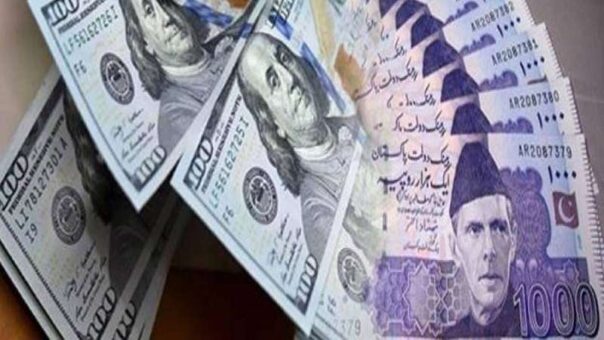Karachi, March 24, 2024 – Financial analysts foresee a stable trajectory for the Pakistani Rupee (PKR) against the US Dollar in the forthcoming week starting March 25, 2024.
This outlook is buoyed by improved foreign investments and constructive dialogues with the International Monetary Fund (IMF).
Closing the week at 278.13 against the dollar, marking a marginal decline from its Monday closure at 278.63, the rupee demonstrated resilience over the week, with a 0.17 percent appreciation across five sessions.
Analysts expect the local currency to maintain its stability within a narrow range until the end of June. However, they caution about potential downward pressure in the subsequent fiscal year, as the newly established government prioritizes growth strategies.
Presently trading at 278 against the dollar in the interbank market, analysts foresee impending pressure on the currency post-June, as the government endeavors to stimulate growth, necessitating increased imports and a heightened demand for dollars.
“The rupee is expected to remain within a defined range until the end of June, but the commencement of the new fiscal year might exert pressure on the local currency due to various factors,” analysts commented.
June typically witnesses substantial outflows, and following a period of stability, the government, in coordination with the IMF, aims to invigorate growth. This goal may entail a surge in imports, thereby escalating the demand for dollars.
“We anticipate the Real Effective Exchange Rate (REER) to hover around 110 by the end of June, indicating an inevitable depreciation of the rupee. However, for the July-September quarter, we project the rupee to trade around 285/dollar, barring any unforeseen spikes in oil prices,” analysts elaborated.
Despite several positive developments, the appreciation of the rupee remained moderate. Notably, the International Monetary Fund reached a staff-level agreement with Pakistan on the second and final review of a $3 billion standby arrangement. Upon approval by its board, this agreement is poised to infuse $1.1 billion into Pakistan’s economy in April.
Looking ahead, Pakistan aims for a renewed, larger, and extended bailout from the IMF, with negotiations for an extended fund facility scheduled for Washington next month. Reports indicate Islamabad’s intention to request a loan of at least $8 billion.
In February, Pakistan recorded a current account (CA) surplus of $128 million, a significant departure from the $303 million deficit in January. This surplus surpassed market estimates significantly. Consequently, the country’s economic team revised down the annual Current Account Deficit (CAD) from $6 billion to $2 billion.
Furthermore, the foreign exchange reserves held by the central bank witnessed an uptick of $105 million, reaching $8.018 billion as of March 15. The State Bank of Pakistan opted to maintain its key interest rate at a record 22 percent for the sixth consecutive time.
Additionally, the REER surged to 102.2 in February, slightly below market expectations around 105. Foreign direct investment in Pakistan turned positive in the same month. Meanwhile, Pakistan’s sovereign bonds rallied following the successful IMF review, with plans underway to offer $300 million in Panda bonds.
Despite these encouraging indicators, the rupee’s appreciation remained somewhat restrained throughout the week, leaving analysts cautiously optimistic about its future trajectory.
